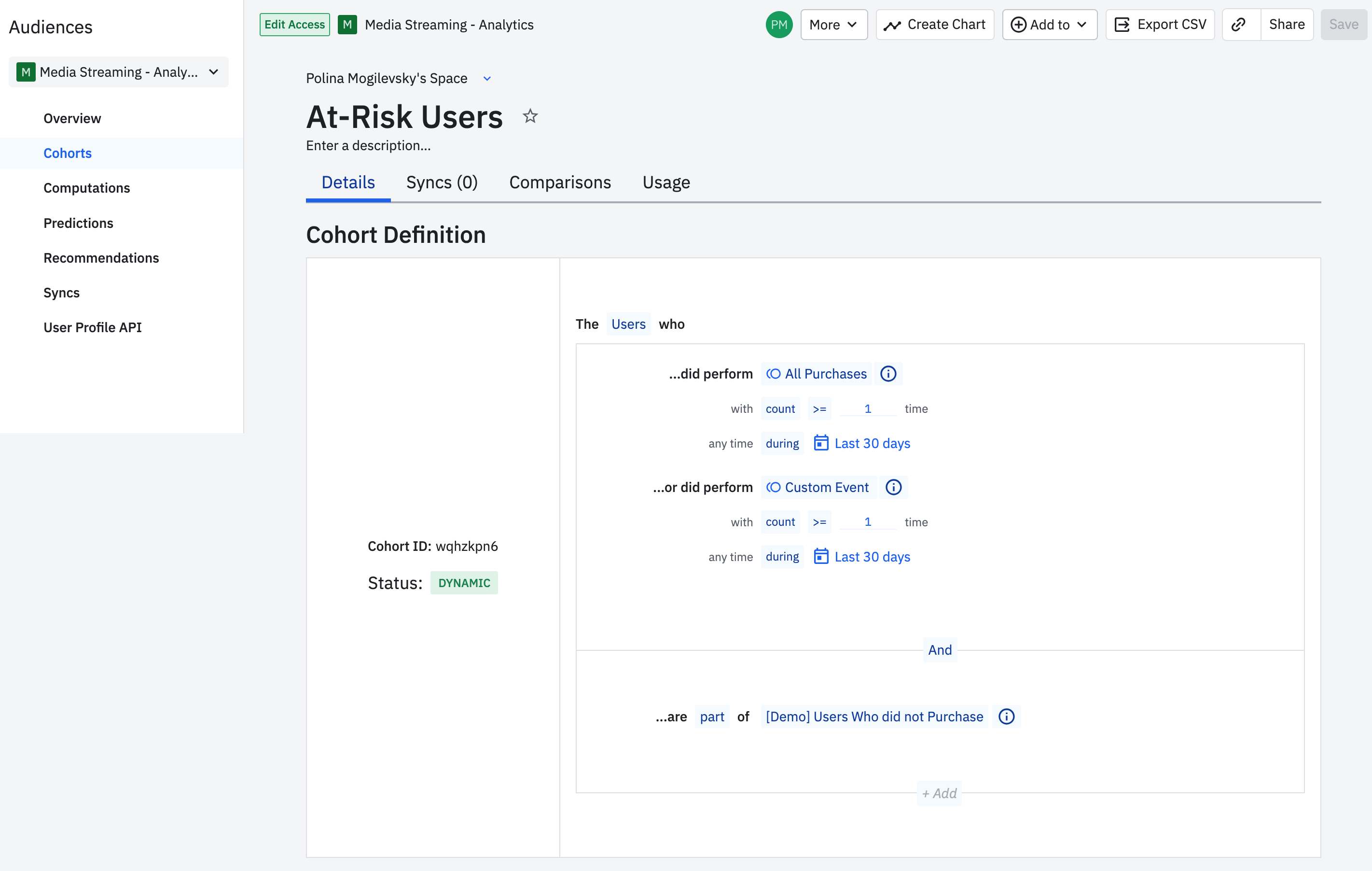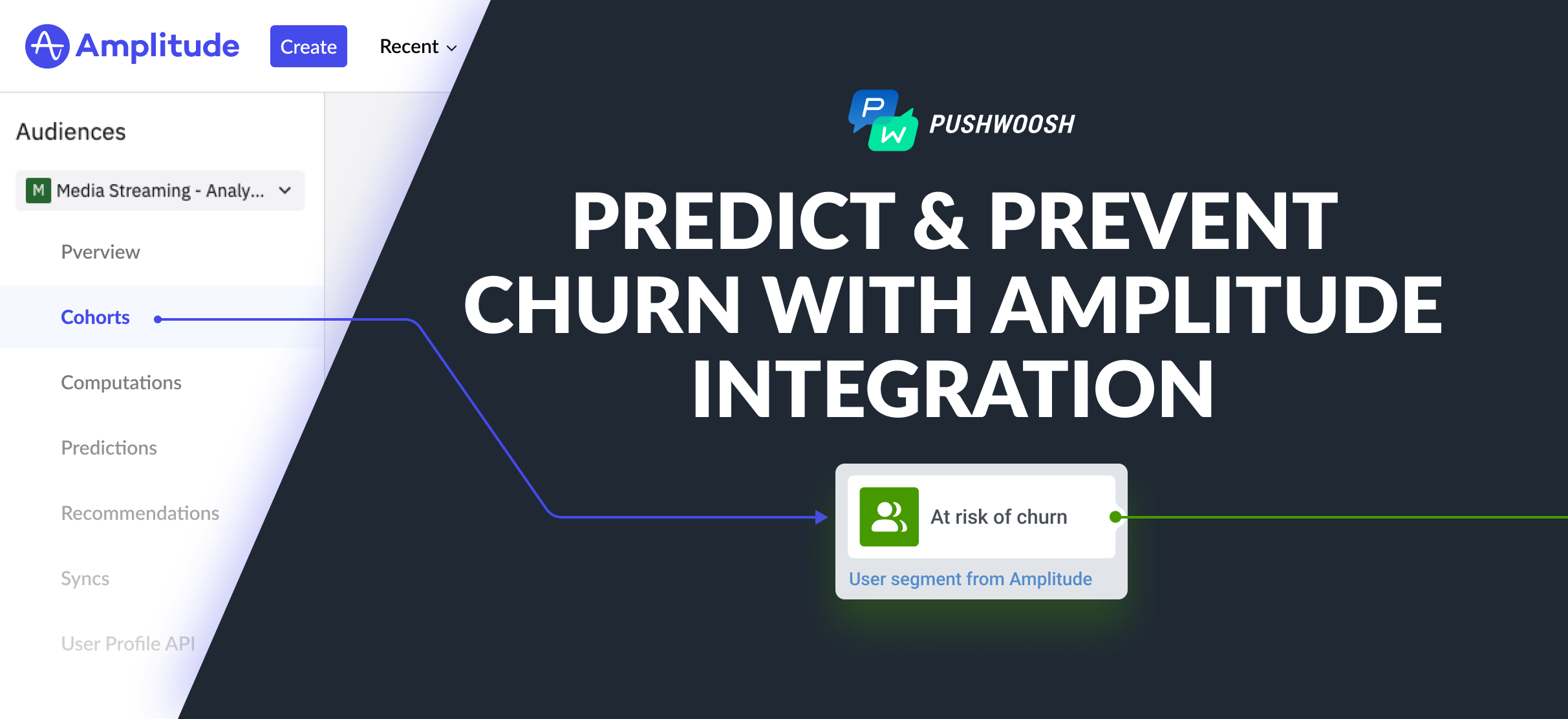Recovering churned customers and users is a job Pushwoosh users have long been in power to do. Now, they can do even better – predict and prevent their audience churn by using our seamless integration with Amplitude. ‘Prevention is the best cure’, as the saying goes, and by acting proactively, you can avoid possible revenue losses and lighten the load on your team by eliminating the need for extensive churn recovery efforts.
In this blog post, we'll show you how to identify users at risk of churning and re-ignite their interest with targeted communications. Jump straight to the how-to section to explore a proactive approach to customer and user retention.

What is customer churn?
To put it simply, customer churn is when paying customers stop buying. Previously, they may have actively bought products, made orders, subscribed to services, or made in-app purchases; now, they’ve stopped doing those revenue-generating activities for whatever reason.
Customer churn is a crucial metric for marketers and business owners because it can seriously impact a company's earnings and growth potential.
Causes of customer churn
The reasons for customer churn can be multi-faceted:
😒 Dissatisfaction with the product or service quality;
📈 Unfavorable pricing dynamics – customers may perceive a mismatch between the value you provide and the price they pay or experience a financial shift on their end;
👎 Subpar customer experience – inconvenience of your app/website, poor customer support, or negative experiences on the buyer’s journey;
🥊 Competitors provide better alternatives;
😐 A lack of engagement on the customer journey – a gradual decline in usage can lead to complete cessation.
To prevent churn, it is important to address these churn inducers preemptively.
What is user churn?
Speaking of mobile apps and websites, user churn refers to the rate at which users disengage with an app/website: stop opening it or taking any meaningful action in it (viewing product screens, using features, playing games, or watching content).
If your app relies heavily on traffic in its monetization, a decreasing number of app open events can soon convert to monetary losses.
Disengaged users may also unsubscribe and opt out of your communications, and you may lose any contact with them, so you won’t be able to re-engage them when they’ve churned.
Causes of user churn
User churn arises when an app loses its perceived utility or appeal.
🚩 If your app analytics alerts a decline in user interaction, this may signal decreased user interest or satisfaction.
Just like in the case of customer churn, user churn can (and should) be prevented.
Churn prevention vs churn reduction: What is the difference?
✋ Churn prevention aims to forestall customer or user departure.
Methods can vary from fostering engagement and satisfaction from the onset to taking emergency measures like offering a limited-time discount to customers who haven’t purchased anything for quite a while.
🤏 Churn reduction, while encompassing prevention, also entails recovering and re-engaging lapsed users.
💰 Prioritizing churn prevention is generally more economical and effective, forming the bedrock of a customer retention strategy. Other churn reduction tactics, such as churn recovery, may serve as supplementary measures.
Why is it important to prevent customer & user churn?
Preventing user churn is economically significant, given the high costs associated with new user acquisition compared to retention. Ongoing user engagement averts churn, bolstering a stable and lucrative user base.
When it comes to (paying) customer churn, the stakes are as high. You don’t want to lose those who generate revenue, as to replace them, you may have to spend a 9x higher price.
Imagine how much it takes to convert a customer for the first time, including budget, time, and marketing team efforts. Initial conversion always takes multiple touchpoints, from awareness to the final sale.
In contrast, a repeat purchase generally comes at lower costs and efforts since the relationship and trust have already been established.
Strategy to prevent and reduce customer & user churn
Now you see how crucial it is to maintain customer and user engagement and prevent them from crossing the threshold into churn. But what steps exactly do you need to take to prevent your audience from churning? Here is the strategic answer:
🔮 Use Amplitude’s predictive analytics to identify potential churn markers;
🔗 Integrate it with Pushwoosh;
💌 Trigger personalized push notifications and other messages aimed at re-engagement.
Through the iteration of this process, businesses can refine their churn prevention tactics. Now let’s dive into more details:
1. Collect data and segment out users at the risk of churn
Using Amplitude, track user events, behaviors, and product interactions. This includes actions like logins, feature usage, session duration, and any other relevant metrics.
Analyze user behavior patterns to segment users into groups: 'Active Users', 'At-Risk Users', 'Inactive Users', etc.

2. Churn prediction with Amplitude
Apply the analytics and prediction capabilities of Amplitude to identify which users are most likely to churn. This prediction can be based on factors like decreasing engagement, reduced frequency of app usage, or not using certain key features.
Create segments in Amplitude for users showing signs of potential churn.

3. Integration with Pushwoosh
Once you have your "At-Risk" segment in Amplitude, integrate this data with Pushwoosh.
Set up automated triggers in Pushwoosh so that when a user falls into the "At-Risk" segment in Amplitude, they automatically receive a targeted push notification.

4. Engagement through push notifications
For users identified as 'At-Risk', send personalized push notifications via Pushwoosh. These could be messages that highlight features they haven't tried, offer special promotions, or provide other incentives to re-engage with the product.

💌 ⏰ Vary the content and timing of these messages to test what works best for re-engaging users.
5. Analysis & Iteration
After sending push notifications, use Amplitude to track if those users re-engage with the product.
Analyze the effectiveness of each push message campaign.
- Which messages led to the highest re-engagement?
- Were certain user segments more responsive than others?
Use this feedback to refine your churn prediction model, adjust segmentation, and tweak your messaging strategies.
💡 Continuous feedback from both Amplitude (user engagement data) and Pushwoosh (post-messaging analytics) can be used to constantly improve your churn prediction & prevention and, therefore, reduce your churn rates.
6. Best practice to stop customer churn: Leverage more than push notifications
A holistic churn prevention strategy extends beyond push notifications. It encompasses an omnichannel approach involving:
- In-app messaging – to re-engage the user in the context of their preferred app usage scenario.
For example, when a customer at risk of churn opens your app, you may tempt them to make a purchase with a personalized discount:

- Email – a go-to channel for the times when a customer is unreachable via push notifications;
- Social media, retargeting ads, chats with customer support, and any other form of communication that is possible with your audience.

About Amplitude
Amplitude serves as an analytical powerhouse, providing deep insights into user behavior and supporting a sophisticated approach to user retention.
About Pushwoosh
Pushwoosh emerges as a multifaceted customer engagement tool, enabling user behavior analysis and segment creation within its platform. To visualize and execute your engagement and retention strategies, use Pushwoosh Customer Journey Builder – the tool that perfectly complements the analytical prowess of Amplitude for refined user interactions.
Learn more about Pushwoosh’s use cases and most relevant product integrations for your business goals.


